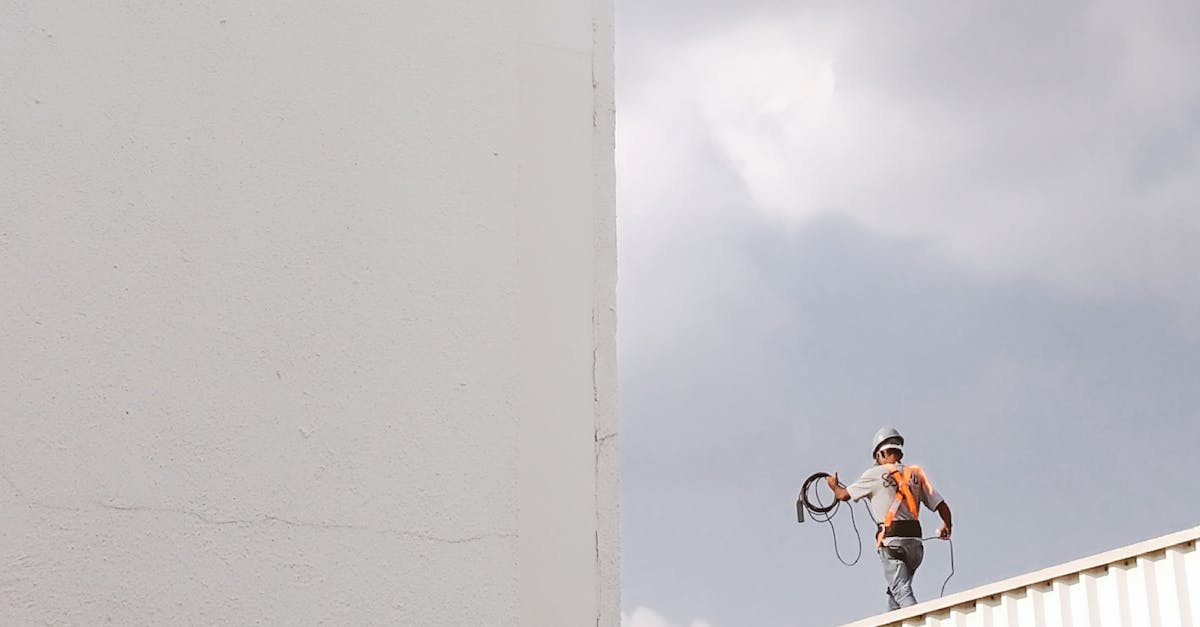How do you know if your roof needs repair?

Mold and Mildew Growth
Visible mold and mildew growth on your roof can indicate serious underlying issues. These growths often thrive in damp environments and can signify water intrusion or inadequate drainage. If you spot dark patches or stains, they may suggest that moisture has accumulated in areas where it shouldn't be, potentially leading to further damage over time.
In addition to aesthetic concerns, mold and mildew can impact your home's air quality and structural integrity. They can release spores that contribute to respiratory problems and other health issues. Addressing the source of the moisture is essential. Ignoring these signs may result in costly repairs and hazardous living conditions.
Have a peek at this blog for further readings.
Identifying Moisture Problems
Moisture problems often manifest as discoloration or stains on ceilings and walls. These visible signs may indicate water intrusion from the roof or other sources. Homeowners should inspect their interiors regularly for these blemishes to catch issues early. Additionally, pay attention to musty odors within the home, as they can signal hidden moisture buildup.
Another crucial aspect involves examining the roof for signs of leaks or damage. Look for missing shingles, cracked tiles, or rusting flashing that might allow water penetration. If any of these find their way into a home, they can lead to serious moisture problems and structural issues over time. Taking preventative measures can save homeowners from significant repair expenses later on.
Discover more here.
Sagging Roof Deck
A sagging roof deck is often an indication of underlying structural issues. This condition can be caused by excess weight from accumulated snow, moisture infiltration, or weakened support beams. Over time, the materials may degrade, compromising the overall integrity of the roof. Homeowners should be alert to visible dips or sagging areas, as these can lead to further complications if not addressed promptly.
Addressing a sagging roof deck requires immediate attention to prevent more severe damage. The first step involves a thorough inspection to identify the root causes. In some situations, this may necessitate professional assessment to determine whether repair or complete replacement is the best course of action. Ignoring signs of sagging can lead to increased risk of leaks, further structural damage, and potential safety hazards.
Click here for additional info.
Structural Integrity Concerns
A sagging roof can indicate serious structural issues that require immediate attention. When rafters and beams bow under the weight of the roofing materials or due to moisture accumulation, it may signal that the underlying support system is compromised. Structural components should be inspected regularly to catch early signs of deterioration, as this can prevent more extensive damage and costly repairs in the future.
Cracks in the ceilings or walls inside your home can also point to problems with the roof's structure. If you notice any shifts or separation in these areas, it’s essential to investigate further. These signs may suggest that the roof is no longer able to support its own weight, which can lead to significant safety risks. Engaging a professional roofing contractor to evaluate the integrity of your roof is a proactive step in maintaining the safety and stability of your home.
Increased Energy Bills
A sudden spike in energy bills can be an indicator of underlying issues with your roof. Poor insulation or leaks may cause your heating or cooling systems to work harder to maintain a comfortable temperature. When outside air infiltrates through damaged roofing materials, your home becomes less energy-efficient, leading to increased costs.
Regularly inspecting your roof for signs of wear can help you catch these problems before they escalate. If you notice a significant rise in energy expenses, consider having a professional evaluate your roof and insulation. Addressing potential leaks and insulation failures promptly can save money in the long run and improve your home’s overall energy efficiency.
Signs of Insulation Failure
Inadequate insulation can lead to noticeable changes in indoor temperatures. Homeowners often find certain rooms colder in winter and hotter in summer, indicating that insulation is not performing as it should. If drafts are felt around windows or doors, it may suggest that heat is escaping or cool air is entering the home.
Increased energy bills serve as a red flag for insulation issues. When the heating or cooling system works harder to maintain comfortable temperatures, the cost of energy typically rises. A thorough inspection of the attic and walls can reveal gaps or compressed insulation that have lost their effectiveness. Addressing these signs promptly can help prevent further damage and improve home energy efficiency.
FAQS
How can I tell if there is mold or mildew on my roof?
Look for dark patches or streaks on the roof surface, especially in shaded areas. If you notice a musty smell inside your home or see water stains on ceilings, this could indicate mold or mildew growth.
What are the signs of moisture problems in my roof?
Signs of moisture problems include water stains on ceilings or walls, peeling paint, and damp spots in the attic. You may also notice an increase in condensation or rust on metal fixtures.
What does a sagging roof deck indicate?
A sagging roof deck is often a sign of structural issues, such as weakened support beams or accumulated water. It’s essential to address this immediately, as it can lead to further damage and safety hazards.
How do increased energy bills relate to roof problems?
Higher energy bills may indicate that your roof is not properly insulating your home. This could be due to damaged roofing materials, inadequate insulation, or air leaks, all of which can cause your heating and cooling systems to work harder.
When should I consider hiring a professional for roof repairs?
You should consider hiring a professional if you notice significant signs of damage, such as extensive mold growth, sagging, or if your DIY repairs do not resolve the issues. A professional can provide a thorough inspection and recommend the best course of action.